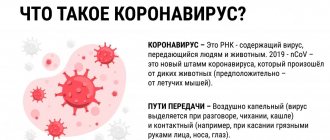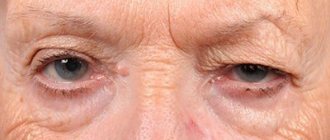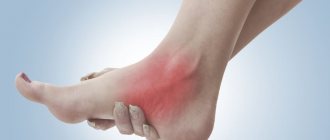The symptom complex of vegetative-vascular dystonia includes many manifestations that affect the functioning of almost all organs. Extrasystole with VSD is a very common symptom and accompanies almost every VSD patient. It is exclusively neurological in nature and in most cases does not threaten the patient’s life, but it brings a lot of inconvenience and leads to an exacerbation of the disease.
What is the essence of sunstroke?
Doctors use this term to describe overheating of the body. “This is a condition that can occur when a person’s body becomes too hot,” comments Andrey Besedin, Ph.D., family doctor at GMS Clinic. - Sunstroke causes damage to the central nervous system. This condition can occur both during exposure to the sun and several hours later.” Our body is able to regulate body temperature quite well: for example, when it increases, sweating is activated.
But sometimes there are glitches in this process. “Heat stroke occurs when compensatory mechanisms cannot cope with heat transfer, and body temperature rises significantly,” says Ivan Golubev, a therapist at the MEDSI Clinical Diagnostic Center in Grokholsky Lane. “Because of this, inflammatory reactions in the body are activated, which can result in failure of various organs and systems. Possible failure of the nervous system, muscles, liver, kidneys, lungs and heart.”
Extrasystole and other signs of VSD
Considering that extrasystoles cause severe discomfort to dystonics and knock them out of their normal state, they become the cause of the development of other symptoms of VSD. These include:
- increased sweating;
- irritation;
- worry and anxiety;
- weakness and malaise;
- chills and feeling of heat.
Panic attacks that occur during heart dances become the basis for the formation of cardioneurosis. A dystonic person risks developing a phobia against the background of such interruptions in the heart.
Attacks of arrhythmia that occur at night disturb the sleep of the sufferer and provoke insomnia. It can also accompany him as a result of constant worry and anxiety.
Extrasystoles in neurocirculatory dystonia, despite their harmlessness, cause circulatory disorders, including cerebral circulation. As a result, the patient experiences attacks of suffocation, lack of air, and dizziness. Shortness of breath appears.
One of the complications provoked by extraordinary heart contractions during VSD is a panic attack. It begins with an attack of panic and fear, accompanied by a feeling of anxiety and tension. Other symptoms include tachycardia, internal trembling and sweating, nausea, suffocation and dizziness. Characterized by unpleasant sensations in the heart area, tingling and numbness of the arms and legs. The panicker is overcome by fear of death, consciousness is confused, and thinking is impaired.
Thus, arrhythmia, being a sign of VSD, provokes the development of other symptoms of the disease and aggravates its course.
Causes of sunstroke
As a rule, this condition is caused by prolonged exposure to the open sun in the heat. “Sunstroke can also occur with high physical activity in dry, windless weather,” adds Ivan Golubev. That's why experts don't recommend exercising outside in the heat.
Several factors increase your risk of sunstroke. These, according to Valery Vasiliev, rehabilitation doctor, kinesiotherapist, osteopath, include the following:
- Direct exposure to the sun on an uncovered head;
- Overweight, obesity;
- Clothes that are too tight and tight;
- Staying in poorly ventilated areas;
- Cardiovascular and endocrine diseases;
- Neurological problems;
- State of alcoholic intoxication;
- Smoking.
“Excessive sun exposure is dangerous for everyone. People who are weakened, overtired, suffering from cardiovascular diseases, thyrotoxicosis, and obesity should be especially careful. Children and elderly people overheat easily,” adds Valery Vasiliev.
The risk of overheating is reduced by proper drinking regimen, loose, well-ventilated clothing made from natural fabrics and a hat, and reducing the time spent in the open sun during the heat of the day to a minimum.
Diagnosis of symptoms of fever, chills, hot flashes
Diagnosis is based on the patient’s complaints, differential diagnosis is carried out to identify the true causes of such sensations. Brain Clinic specialists eliminate the possibility of making a false diagnosis as much as possible and are focused on identifying the true causes of these symptoms. Our specialists do not prescribe treatment based on symptoms alone.
An example of patient complaints of hot flashes or chills.
Patient: Male, 43 years old, married, two children, businessman, owner of his own business, leads a healthy lifestyle, has never used drugs or alcohol. I turned to the Brain Clinic psychotherapist on the recommendation of a friend, who brought him. The patient described his story as follows:
“It all started a long time ago, somewhere in 1998, at the end of the year, after the main wave of the crisis. I lost almost everything then. It all started with some periodic attacks, either fever or chills. There was no time for treatment, it was necessary to save the case. I didn’t get treatment and didn’t tell anyone. But gradually, after two years, I began to be bothered by chest pain and a low-grade fever of 37.2. Then more - chest pain, a feeling of “coughing”, congestion in the chest, shortness of breath when walking. There was no temperature, congestion, coughing, or chest pain in the morning, or at night either. During the day, tremors often appeared, chills, sometimes fever, sweaty palms, panic attacks, fear, increased heart rate, at the time of the attack the pulse was 120 and the pressure was 150 over 100. I was examined by a neurologist, KMN, in a good medical center, I was diagnosed with vegetative disease -vascular dystonia. All the symptoms that I described to the doctor one hundred percent point to this. I read on the Internet about this disease. I went to a pulmonologist, fluorography, endocrinologist, and oncologist, all without pathology. General blood and urine tests are excellent, I took them 5 times a year. Diseases of the heart, adrenal glands and kidneys are excluded. The temperature began to stay the same almost all the time and alternated between fever and chills. The neurologist prescribed treatment. There was no improvement. The pressure has become even more unstable, for example, during an attack, high blood pressure appears, and the heartbeat is constantly normal all day, 60 - 70 - 80, occasionally 95, but not higher, although previously it always increased to 120 during an attack. Doctors began to talk about hypertension diseases. When an attack began, I began to understand it by the sweating of my palms, some kind of excitement sets in, the muscles of the body twitch, attacks of chills, then attacks of fever and tremors come. Then they prescribed another course of treatment and physical therapy - electrophoresis with drugs. I stopped taking medications, depending on whether you take them or not. No difference. Without the help of medications, your health becomes better and worse. For the first two years it was still possible to endure it, but then it became difficult to bear it all, so I turned to a doctor. But now it’s simply impossible. Constant aching pain, difficulty breathing, coughing, shortness of breath. It has become difficult to get things done; now I don’t drive a car without a driver. The head fills with lead, there is a feeling that there is no blood flowing there, the temples and jaw go numb, sometimes the head burns very strongly on the left side. Dizziness, staggering when walking (impaired coordination), when looking at fast-moving objects, dizziness occurs, tinnitus, pain in the back of the head and neck, there is a feeling of no blood flow, nausea, numbness of the hands and feet, blurred vision worsens, before the eyes the veil then darkens. I feel like I’m about to faint, but I don’t. Severe weakness, as after hard work, drowsiness, loss of appetite, legs give way, like cotton wool, throws you into chills, then into a fever. For example, yesterday there was an attack with only high blood pressure, the pulse was 65 - 70, and the pressure was 150 to 99, and it jumped for about 10 minutes, then it recovered. I didn't take the pills. Today the pressure rose in the same way, without an increase in heart rate, the pulse remained at 70, and the pressure was again 148 over 100, then it dropped on its own. But at first there was a strong chill, then I felt a fever, tremors, loss of coordination, and dizziness began. I visited that medical center again. But now, after an ultrasound of the BCA and an MRI according to the vascular program, vertebral artery syndrome and hypoplasia of the left vertebral artery of the third degree were revealed. They offer surgery, but I’m afraid, because they gave me a different diagnosis and treated me for a long time, but their treatment was completely useless. Now - the operation. I'm afraid it will help in the same way as their previous treatment. I don’t smoke, I don’t drink alcohol, I don’t eat after 7 pm, I don’t eat sweets, flour, or fried foods, I drink only plain filtered or mineral water, green tea without sugar, I follow a daily routine, I get up early, I go to bed early, I used to go to the gym, I have no strength now. I’m already tired of living like this, it’s not life, but one continuous torment. And the work isn’t going well, I’m starting to lose ground in business. I don’t know what else to do.”
Comment from a psychotherapist: VSD, or vegetative-vascular dystonia, is not a diagnosis. This is a manifestation of certain symptoms that indicate the presence of dysfunction between the central and autonomic nervous systems. Symptoms also include panic attacks and hypertension. In this example you can see that the reason for the manifestation
attacks of chills and
attacks of fever, is a breakdown of higher nervous activity against the background of strong psycho-emotional experiences, i.e. against the backdrop of severe stress. A borderline mental disorder has developed, which can be classified as an anxiety-depressive syndrome complicated by autonomic dysfunction.
Signs of sunstroke
The first symptoms of sunstroke are fatigue, headache, dizziness, and a feeling of “ache” in the body. “There is also a chance of nausea and vomiting. A little later, tinnitus, shortness of breath, rapid heartbeat, and darkening of the eyes may appear, warns Ivan Golubev. - At this stage it is important to provide assistance! Further overheating leads to rapid damage to the central nervous system (CNS), cyanosis of the face occurs, severe shortness of breath, the pulse becomes frequent and weak. This is accompanied by muscle cramps and hallucinations. Breathing becomes uneven, thoughts are confused, and delirium occurs. The victim may lose consciousness at any moment.”
Other signs of sunstroke should also alert you. “When overheated, patients complain of weakness, “weakness,” drowsiness, headache, thirst, nausea, tachycardia, shortness of breath, body temperature rises to 40-41˚C,” adds Andrey Besedin. — Almost always the patient has psychosomatic problems (loss or confusion, inability to get up, dizziness, etc.). This is a medical emergency that must be treated quickly because it can cause death."
According to doctors, some symptoms of sunstroke can be confused with signs of a stroke, severe allergies to certain medications, acute bacterial infections and thyrotoxic crisis. “All of these conditions, including heat stroke itself, can be extremely dangerous, so you should not make a diagnosis yourself. In this situation, it would be correct to immediately call an ambulance team,” warns Ivan Golubev.
While waiting for paramedics, the victim must be given first aid.
Causes of high fever, nausea, headache
This set of symptoms can appear even in a person without any diseases. Nausea, headache, temperature up to 37 degrees occur during severe fatigue, stress, nervous or physical tension. In addition, these signs are characteristic of heat stroke. They pass in a few days, provided proper rest. However, these symptoms may also indicate more dangerous disorders that require treatment, medications and regular examinations by a doctor.
Diseases of the gastrointestinal tract
Fever, nausea, and headache are typical signs of inflammatory diseases of the stomach and intestines. They are also accompanied by abdominal pain, indigestion, and intolerance to certain foods. There are several main diseases that are often diagnosed in patients of any gender and age.
- Gastritis is inflammation of the gastric mucosa. The disease can occur in acute or chronic form. Its main cause is considered to be the opportunistic bacterium Helicobacter pilori; other pathogens can also be detected. Inflammation develops as a result of poor nutrition, impaired secretion of gastric juice, as well as long-term systematic intake of alcohol and certain medications. When the cause is eliminated, gastritis goes away without consequences.
- Gastric ulcer is a consequence of frequent exacerbation of gastritis, improper and irregular nutrition, taking certain groups of drugs (non-steroidal anti-inflammatory drugs), as well as increased secretion of gastric juice. Defects appear on the mucous membrane and increase in size. Without timely treatment and adherence to a diet, the ulcer may perforate with the formation of a defect in the stomach wall and the release of its contents to the outside.
- Crohn's disease is a chronic disease whose cause remains unknown. It affects the mucous membrane of certain areas of the large, less often small, intestine. During the diagnosis, inflammation of the mucous membrane, the appearance of ulcers and neoplasms, and narrowing of the intestinal lumen are detected. Treatment is symptomatic and surgery may be required to remove the affected area.
Diseases of the stomach and intestines require timely treatment. They quickly become chronic and progress. The doctor will determine the cause and stage of the disease and prescribe a treatment regimen. In most cases, a gentle diet is prescribed, in which it is recommended to eat food in small portions. Fatty, sweet, flour and fried foods, as well as offal, should be completely excluded from the diet.
Infectious diseases
A simple seasonal cold, ARVI, is a common occurrence. They are associated with a decrease in the body's immune defense during the off-season, bad weather conditions and a deficiency of vitamins in the diet. When you have a cold, you have a headache, nausea, the temperature rises to 37 degrees or more, and general weakness appears. However, these symptoms last no more than a week. Rest, bed rest, and drinking plenty of fluids helps you quickly return to normal.
Infections that affect the digestive tract pose a great danger to humans. These diseases occur with signs of nausea, vomiting, and general weakness. There are several diseases that can be contracted by consuming poorly washed vegetables and fruits, low-quality products, and contaminated water.
- Rotavirus infection – also called stomach or intestinal flu. The disease occurs with general weakness, fever, nausea, and can manifest itself in an acute form. In most cases, treatment takes place at home, but hospitalization may be required.
- Salmonellosis is a disease caused by the Salmonella bacterium. Infection often occurs when eating meat and eggs that have not been heat-treated. The infection causes severe pain in the head and stomach, nausea and vomiting. After confirmation of the diagnosis, the patient is placed in an infectious diseases hospital and treated with antibiotics.
- Botulism is a dangerous disease caused by a bacterium. In the human body, it releases toxins that cause severe pain, nausea and vomiting, weakness and fever.
- Clostridiosis and staphylococcosis are no less dangerous toxic infections that occur with similar symptoms. They affect the mucous membrane of the digestive tract, and toxins cause general weakness and poor health. Treatment takes place in a hospital.
Infectious diseases are characterized by an acute onset. Nausea, vomiting, and headache occur abruptly, but in some patients the clinical picture increases gradually. It is important to consult a doctor and begin treatment at the first symptoms in order to reduce the risks to the body and the likelihood of complications.
Parasite infestations
Helminths are parasitic worms that enter the body with water or food and can be found on environmental objects. After entering the body, they go through a development cycle and multiply. Their waste products are toxic to humans, so helminthiases are accompanied by nausea, vomiting, and general weakness. In addition, a large accumulation of parasites in the intestinal lumen is dangerous due to rupture of its wall.
To confirm the diagnosis it is necessary to undergo tests. Blood, feces or other liquids are used as research material. It is important to pay attention to the first symptoms indicating the appearance of helminths, including:
- sudden weight loss without changing your diet;
- frequent attacks of nausea;
- pain in the head and stomach;
- slight increase in temperature;
- pallor of the skin and mucous membranes, possibly a yellowish tint.
It is important that helminths can live not only in the human gastrointestinal tract. Some representatives affect the liver, lungs, heart, and can migrate with blood and lymph. The smallest ones affect blood cells and cause their destruction. Treatment is prescribed individually, depending on the type of parasite and the degree of invasion. The scheme includes several stages, during which the patient needs to take specific drugs, and then - means to restore normal microflora.
Brain diseases
Fever, nausea, weakness, headache - these signs can be a signal of various brain diseases. They are based on inflammation or mechanical compression of tissues, as a result of which the innervation of certain parts of the body is disrupted. These are dangerous disorders that require treatment in the early stages - this is the only way to prevent dangerous consequences.
- Meningitis is an inflammation of the lining of the brain. The disease has a viral or bacterial origin, less often it is caused by fungi. Fever and headache are the first symptoms for which it is important to immediately consult a doctor. Treatment takes place in a hospital, with the use of antibiotics and drugs to improve blood circulation in the brain.
- Encephalitis is inflammation of the brain. The process develops when exposed to infectious agents and can manifest itself in polio, rabies, smallpox and other diseases. Encephalitis can also be caused by bites from infected ticks. The disease is particularly dangerous and can be fatal. At home, you can prevent it by treating blood-sucking insects and timely vaccination.
- Stroke is an acute disorder of cerebral circulation. It can be caused by insufficient blood supply to brain cells (ischemia) or rupture of a vessel with the formation of a hematoma. The first symptoms may be slight weakness, headaches, nausea, but the condition is life-threatening. The chances of full recovery are especially high if you see a doctor in the first 2 hours after the attack.
- Traumatic brain injuries are the reason why fever, nausea and headache bother a person even after a long time.
Symptoms of inflammatory diseases of the brain appear sharply and immediately cause an acute clinical picture. Headache and nausea do not go away even after taking medications, and only get worse over time. Doctors at the Clinical Institute of the Brain warn: the effectiveness of treatment depends on the timeliness of first aid. Otherwise, there may be irreversible disruption of many brain functions and death of nerve tissue.
Poisoning
Intoxication of the body with food, alcohol and medications, as well as various gaseous substances is a dangerous condition. Toxins penetrate the bloodstream and quickly spread throughout organs and tissues. The patient’s well-being deteriorates immediately, within several hours after exposure to toxic compounds. The clinical picture of poisoning includes the following symptoms:
- nausea and vomiting;
- acute headache, dizziness, fainting;
- indigestion, diarrhea;
- pallor of the mucous membranes;
- possible increase in temperature;
- arrhythmias, increased heart rate.
In case of poisoning with certain substances, you can use antidotes. These are compounds that neutralize the effects of toxins and promote rapid improvement in well-being. However, for most types of poisoning there are no antidotes. Treatment consists of drinking plenty of fluids, fasting, and drips of electrolyte solutions. These measures will restore normal blood balance and reduce the concentration of toxic substances.
Other reasons
Deterioration in well-being can be caused by various factors. Nausea, fever, headache indicate various inflammatory processes, disruptions in the functioning of various organs and systems. It is important to pay enough attention to diagnosis to determine the exact cause of deterioration in health. Additional tests may show the following disorders:
- increased blood pressure - in the chronic form, attacks can be triggered by stress, fatigue, and changes in weather conditions;
- diseases of the inner ear - labyrinthitis, Meniere's disease and other pathologies are manifested by acute headache, hearing impairment, and possible discharge from the ear canal;
- disorders of the thyroid gland - they can be determined by the results of blood tests;
- migraine - the disease manifests itself as attacks of headache, which are associated with cerebrovascular insufficiency.
Headache, nausea, deterioration in health, fever are common symptoms that can occur in the absence of any diseases. They often occur in the warm season, as a result of heat stroke. After prolonged exposure to the open sun, a person’s temperature rises and weakness appears. It is important to monitor your well-being in the summer and protect your head and skin from direct sunlight.
First aid for sunstroke
The main rule here is to quickly move to a cool room and gradually reduce body temperature.
“If you were unable to protect yourself from exposure to the sun or you need to provide first aid to a person with sunstroke, then, of course, it would be best to consult a doctor, and until he arrives, move to a shaded place or a cool room where there is enough oxygen and a normal level of humidity and get rid of outer clothing. You also need to drink cool water, preferably mineral water, or regular water, but with added sugar and salt on the tip of a teaspoon. This will help restore the water-salt balance,” advises Valery Vasiliev. You should also place the patient on his back and begin to gradually cool his body using physical methods. “You can blow on an undressed patient, make a wet wrap, spray water at room temperature on him, apply “cooling” bags to the armpits and groin areas, and neck,” adds Andrey Besedin.
If for some reason it is impossible to undress, remove at least those items of clothing that are squeezing your chest and neck: unbutton your shirt collar, loosen your belt.
All these methods will help reduce body temperature to normal values and restore the functioning of the cardiovascular and respiratory systems.
Diagnostic methods
Nausea, headache, temperature of 37 degrees or more are good reasons to undergo a full examination. It is important to identify infectious diseases at the initial stage, isolate the patient in a hospital, or explain the rules on how to prevent further spread of the infection. After the examination, the doctor may prescribe additional tests and examinations:
- ultrasound examination of the gastrointestinal tract, liver and biliary tract;
- examination of the brain using MRI or CT to identify areas of ischemia, neoplasms, aneurysms and other pathologies;
- clinical, biochemical blood tests - will indicate inflammatory processes in the body, disturbances in the functioning of internal organs;
- X-ray of the cervical spine - the cause of headaches may be associated with vascular spasms in this area.
At the Clinical Institute of the Brain, it is possible to conduct a full diagnosis of headaches, which are accompanied by fever and nausea. Our center has modern equipment - thanks to it, you can get the most accurate results.
How to avoid sunstroke?
The simplest thing is to moderate your exposure to the sun in hot weather, but if this is not possible, follow these rules:
- Avoid intense physical activity outdoors on hot sunny days between 11:00 and 17:00, or stay in the shade of trees.
- Choose the right clothes - light, loose, made of cotton fabrics; Be sure to wear a hat.
- Keep an eye on your water balance. “Maintain a water regime at the rate of 30 ml of liquid per 1 kg of your own weight,” recommends Valery Vasiliev.
“The loss of fluid should be restored gradually, using for this purpose chilled mineral water, weakly brewed green tea, and natural diluted juices. It is also worth limiting the consumption of fatty and protein foods,” adds Andrey Besedin.
- Do not drink alcohol or other psychotropic drugs that affect thermoregulation processes. “And finally, remember that a healthy body is less susceptible to external factors. Therefore, your daily routine, diet (in particular drinking regimen) and regular physical activity should be your faithful companions on an ongoing basis. Consider all these recommendations, follow safety measures in the sun, and then sunstroke will bypass you,” sums up Valery Vasiliev.
Diagnostics
The doctor clarifies all the symptoms, their frequency, asks about your diet and sleep patterns, and how often you are in stressful situations. Asks about head, hearing, and vision injuries; do you take vitamins and medications, drink alcohol, and about the pace of life.
After all clarifications, the doctor refers to:
- blood analysis;
- echocardiography;
- electrocardiography;
- CT (computed tomography);
- MRI of the brain (magnetic resonance imaging);
- radiography;
- vestibulometry;
- audiography;
- electroencephalogram;
- Ultrasound.







